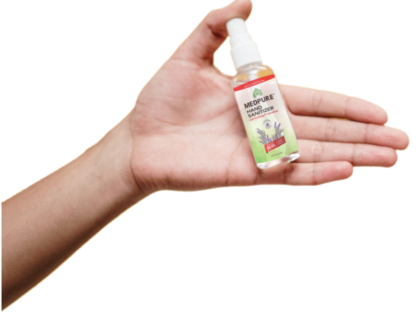Studies spotlight high COVID-19 infection rate in US prisons

A trio of new studies is highlighting the burden of COVID-19 in the nation’s prison population and shedding light on how prisons might be able to reduce transmission.
Nationwide, federal and state prisons have been among the congregate facilities that have been hit hard by the coronavirus. According to the Marshall Project, which has been tracking data on COVID-19 infections in state and federal prisons with the Associated Press, at least 102,494 prisoners have tested positive as of Aug 14, and 889 have died. Those figures do not include correctional facility staff.
Preventing the spread of SARS-CoV-2 (the virus that causes COVID-19) in correctional facilities is difficult because of the crowded living conditions, limited ability to isolate or practice distancing, and inadequate hygiene. In such settings, the virus spreads easily. In addition, the virus is has been repeatedly brought in to prisons from the community by staff members, visitors, and new prisoners.
Alarmingly high infection rates
As a study today in JAMA Network Open shows, these factors are contributing to a much higher infection rate among incarcerated people than is seen in the general public.
The study, conducted by researchers at Harvard University and Brigham and Women’s Hospital in Boston, examined data from 16 Massachusetts Department of Corrections (MA DOC) facilities and 13 county-level systems from Apr 5 through Jul 8. The data showed 1,032 confirmed COVID cases in prisoners (664) and staff (368) out of 14,987 prisoners in the facilities—or a rate of 6.9% among inmates and staff.
The COVID-19 infection rate was 4.4% among prisoners, which is 2.91 (95% confidence interval [CI], 2.69 to 3.14) times higher than the population of Massachusetts and 4.8 (95% CI, 4.45 to 5.18) times higher than the US population.
The study also found that prison systems that had higher testing rates and released fewer prisoners to prevent disease spread had higher COVID-19 incidence. In the MA DOC facilities, where the testing rate was 1,093 per 1,000 persons, the case rate was 5.2%. In the county jails, the testing rate was 254 per 1,000 persons and the case rate 3.6%. But the MA DOC reduced their population by only 9%, compared with the county jails, which released 35% of their prisoners and decreased their population by 21%.
“Rates of COVID-19 in Massachusetts jails and prisons are alarmingly high and require urgent action,” the study’s authors wrote. “Access to testing without coercion, decarceration, and contact tracing are necessary to decrease harm from COVID-19 to incarcerated people and their communities.”
Mass testing
The role of testing was also highlighted in a study of US prisons published today in the Centers for Disease Control and Prevention’s (CDC’s) Morbidity and Mortality Weekly Report (MMWR).
To better understand the SARS-CoV-2 prevalence in these settings, a research team led by the CDC requested data on mass testing events in prisons from 15 US jurisdictions, along with cases identified at the prisons before mass testing. Six of the jurisdictions provided data for 16 facilities (11 state prisons, 3 federal prisons, and 2 county jails). All 16 facilities had identified at least one case through symptom-based testing prior to mass testing.
Mass testing was conducted at the 16 facilities from Apr 11 to May 20, with a total of 16,161 prisoners offered testing and 7,597 testing positive. In the 16 facilities, SARS-CoV-2 prevalence among prisoners ranged from 0% to 86.8% (median 23.9%). Mass testing increased the total known cases from 642 before mass testing to 8,239 after, representing a median 12.1-fold increase in the number of known infections.
In 12 of the 16 facilities, mass testing data from 85 housing units showed that SARS-CoV-2 prevalence was more than three times higher in dormitory-based units (median, 42.6%) than in cell-based units (median, 14.6%).
In two of the federal prisons, prisoners who tested negative and were then quarantined as close contacts of those who tested positive were re-tested after 7 days, with 26.8% testing positive in one of the prisons and 20.5% testing positive in the other.
The jurisdictions that provided mass testing data said the results helped them medically isolate prisoners who tested positive and quarantine close contacts to prevent continued transmission. In addition, the results informed targeted testing strategies in facilities where mass testing had not taken place.
“This analysis demonstrates that mass testing irrespective of symptoms, combined with periodic retesting, can identify infections and support prevention of widespread transmission in correctional and detention environments,” the authors of the study wrote.
They say the results indicate prison staff should also be tested at regular intervals, regardless of symptoms, and that housing configuration may be contributing to transmission.
Intake screening for new inmates
In another paper today in MMWR, researchers from the CDC and the Puerto Rico Department of Health suggest that a new protocol for diagnosing and managing COVID-19 in newly incarcerated prisoners might also help reduce coronavirus spread in prisons.
As of Aug 17, only two COVID-19 cases have been identified among people incarcerated in Puerto Rico prisons, and no deaths. This follows the implementation in mid-March of a wide range of measures by the Puerto Rico Department of Correction and Rehabilitation.
The measures include conducting all new prisoner intake at a single location, performing reverse-transcription polymerase chain reaction (RT-PCR) on all new prisoners regardless of symptoms, and cohorting new prisoners in the intake area in groups of no more than 20 while they await test results. If everyone in the group tests negative and all remain asymptomatic during 14-day quarantine, they are released into the general population. Prisoners who test positive are isolated.
The Department of Correction and Rehabilitation also separates the prison population into groups of 40 to 75 prisoners that do not share common areas. If any group member exhibits symptoms, that person is isolated and the entire group quarantined until the symptomatic person tests negative.
Prisoners who leave prison grounds for any reason must go through the intake process again.
Of the 1,340 who entered prisons in Puerto Rico from Mar 16 to Jul 31, only 2 tested positive for SARS-CoV-2.
“Efforts to mitigate SARS-CoV-2 transmission, including rigorous intake screening and cohorting, likely have helped prevent an outbreak in the state prison population,” the authors said. “Puerto Rico’s measures to protect incarcerated persons from COVID-19 can serve as a case study in the successful implementation of CDC’s guidelines for correctional facilities, particularly the prevention practices for incarcerated or detained persons.”

The CoviScience Team is a group of professionals dedicated to helping our Pandemic torn nation get back to normal. We all recognize that helping each other to find, analyze and select home, office and educational solutions can be the difference between thriving and merely surviving. We encourage every0ne to participate in our online community by contributing, sharing and commenting. Stay Safe. Stay Healthy and Stay Happy. ~ The CoviScience Team.
Recommended Posts

WHO enlists more COVAX participants, clears 2nd rapid test
October 5, 2020

5 Back-to-School Safety Tips During the COVID-19 Pandemic
August 27, 2020




